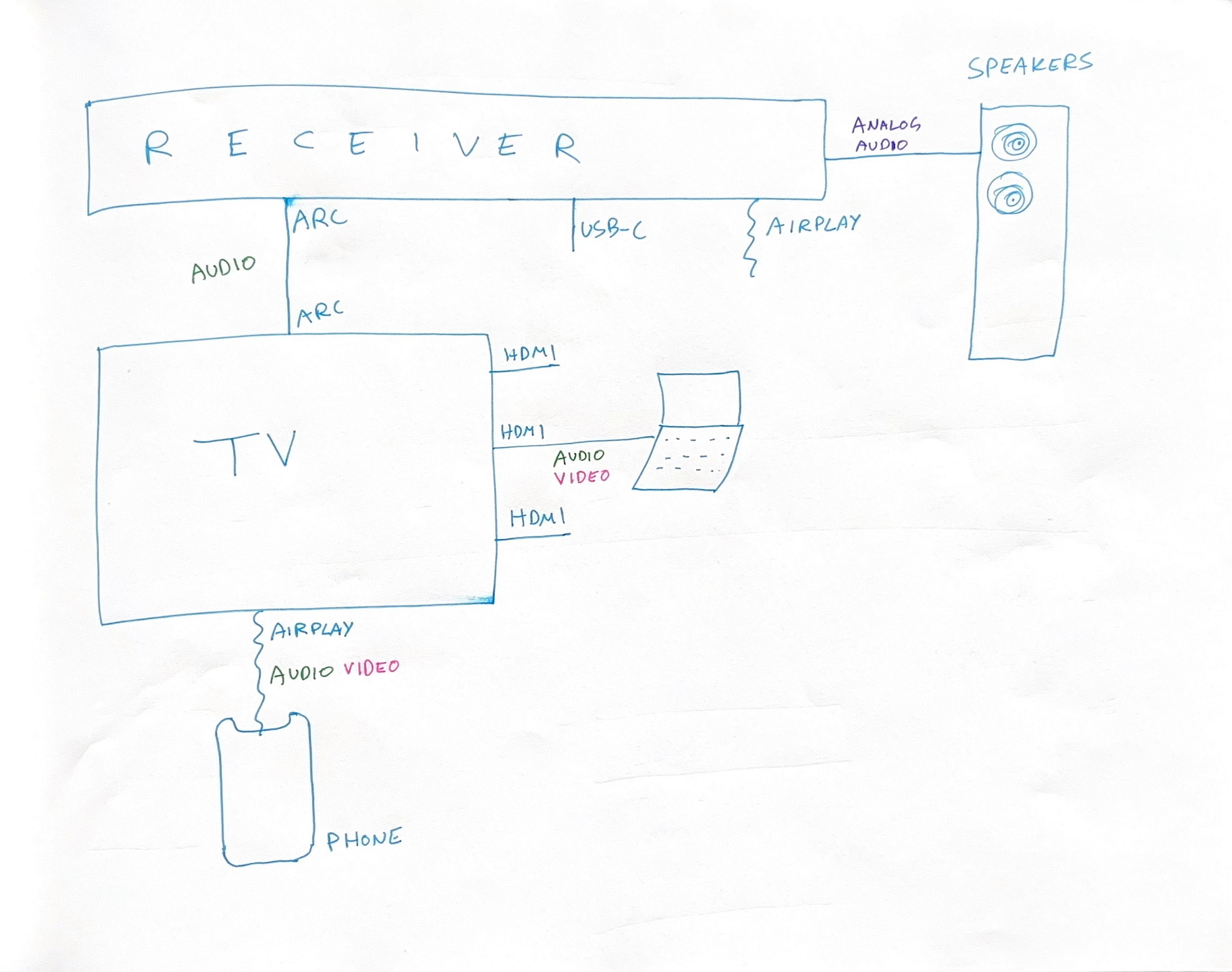Audio receivers would be simpler than AV receivers
I use a Denon receiver with my Sony TV. The receiver takes HDMI input from my laptop, sends the video to the TV, and plays the audio — hence “AVR” (audio + video receiver):
Now picture an easier-to-use device, which I’ll call an audio receiver. It’s not an AVR — it doesn’t even know what video is, any more than a Bluetooth earphone does. It would have the following audio inputs:
One ARC input, to receive audio from your TV. All video sources—laptop, console, set-top box, etc.—plug straight into the TV.
One USB-C input, to receive audio from a laptop or phone while charging it.
AirPlay, to receive audio from any Apple device.
Why an audio receiver beats an AVR for many of us
No video bottlenecks: My TV supports 120 Hz and VRR, which my AVR doesn’t, so I lose these features when video runs through it. By contrast, with an audio receiver, video goes straight to the TV, so you can make use of all your TV’s features.
Setup hassles: For a month or two, I was using my AVR with HDMI in standard rather than enhanced mode, reducing video quality. By contrast, an audio receiver wouldn’t have video settings, ensuring the best video quality.
Two-step input switching: When I plug my laptop into my AVR, I have to select the laptop as the input on the AVR, and the AVR as the input on the TV. By contrast, an audio receiver would be permanently connected to only one device — the TV — so you’d only need to switch the TV’s input.
Deconstructing the AVR
When you have a product like an AVR that does multiple things, instead of treating it as a unified whole, itemise them:
Switching between sources like a laptop, game console, Blu-ray player or set-top box.
Relaying the video to the TV.
Converting digital to analog.
Amplifying analog.
Now ask which of each add value to the user:
(4) must be done in the receiver, because that’s its core job1.
(3) is best done in the receiver, since the music sounds better than when the D-to-A conversion is done in a TV or a Macbook Pro2.
(1) and (2) don’t add value to the user. They can be done just as well on the TV.
So, remove the redundant features (1) and (2) and reassemble the valuable features (3) and (4) back into a simpler product — the audio receiver — that offers a streamlined user experience.
Till someone makes floorstanding speakers where the right speaker has an integrated receiver with HDMI ARC, USB-C and Ethernet ports, for fewer cables and less clutter in your house.
I tried with three devices:
Macbook Pro (M1 Pro, 16-inch)
Audio-Technica ATR2x-USB adapter plugged into the same Mac
Sony A95L TV
All three have a 3.5mm jack, and I plugged in a 3.5mm - RCA cable. And in all cases, it sounded worse than using HDMI to send audio to the receiver digitally and converting to analog in the receiver, which has higher-quality circuitry.





